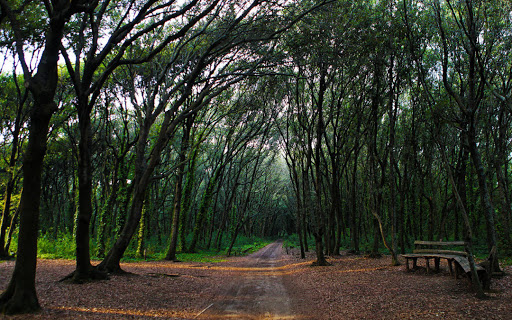
Foresta di Cuma
This post is also available in:
 Italiano (Italian)
Italiano (Italian)
Foresta di Cuma, owned by Demanio Forestale della Regione Campania, covers an area of about 100 hectares which arrive to the sea. The territory of Cuma is located in the widest area of Campi Flegrei (from Greek flégo, burn), which is characterised by the high presence of secondary volcanic phenomena and because of the presence of numerous craters filled by water becoming natural basins like the lakes d’Averno, Lucrino and Fusaro. It is only 30 km away from Naples, in the municipalities of Pozzuoli and Bacoli and here myth and history blend together in a unique and surprising environment. The Greeks arrived to Cuma in the 8th century a.C., and decided to settle here behind the forest, since they remained fascinated by the place. The archaeologists have found signs of the acropolis behind the holm oak wood, the so called Monte di Cuma.
It is an evergreen area known because of its naturalistic characteristics and its history: it is possible to see the signs left by ancient civilities. After leaving Circumflegrea and following the signalled path, people enter directly in a dense holm oak wood, which extended form Lago di Fusaro and foce del Volturno decades ago then, because of human interventions, it was divided into two parts, Pineta del Lago Patria and the part that from Lago Fusaro and gets to Licola. Nowadays, the forest is still known with the name Selva Gallinaria, because of the high presence of common moorhens in ancient times, a water bird with black feathers, which eats insects and buds of water plants, small fishes, crustacean, molluscs, abundant in these wet areas.
The forest is mainly formed by holm oaks (Quercus ilex) and bushes like myrtles (Myrtus communis) and rosemary (Rosmarinus officinalis), while the Mediterranean scrub presents a rich variety of flowers, especially in the coastal area characterised by sand dunes hosting vegetation and offerings also protection and stability to the microclimate. It is possible to find Ammophila litoralis, Echinophora spinosa, Eryngium maritimum, Echinophora spinosa and Agropyron junceum. The same dunes are preserved form erosion and corrosion by the presence of specimens like Xantium spinosum and Cakile maritima, which have their roots in the sand. Thanks to the presence of Pancratium maritimum, the dune area, the beach of Cuma, is considered S.I.C. (Site of community importance) and is considered a special area. Here are often organised events and days of study to discover and know the magnificent nature of Campi Flegrei.
This post is also available in:
 Italiano (Italian)
Italiano (Italian)
Contatti
80070 Cuma, Pozzuoli(NA)
